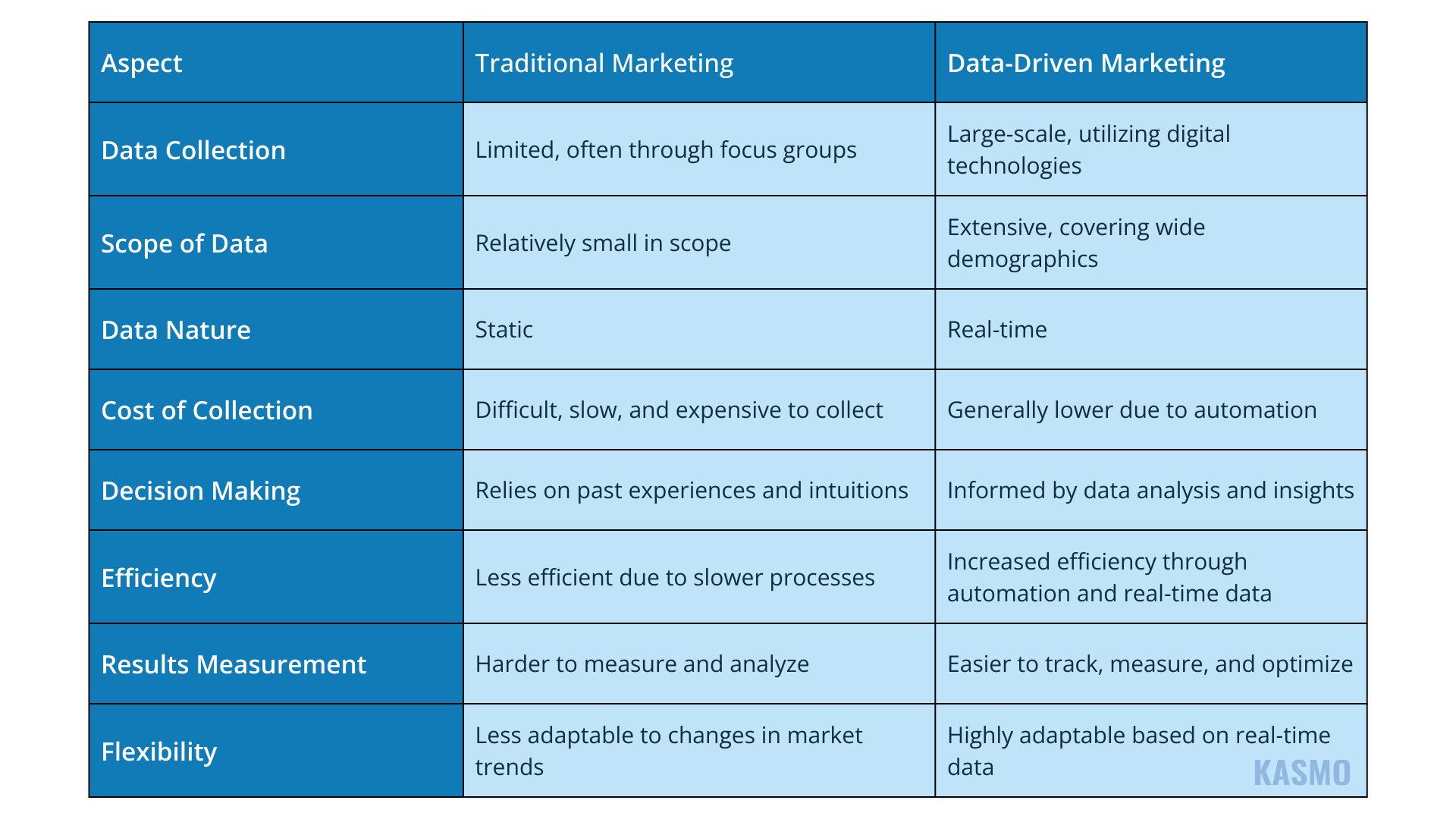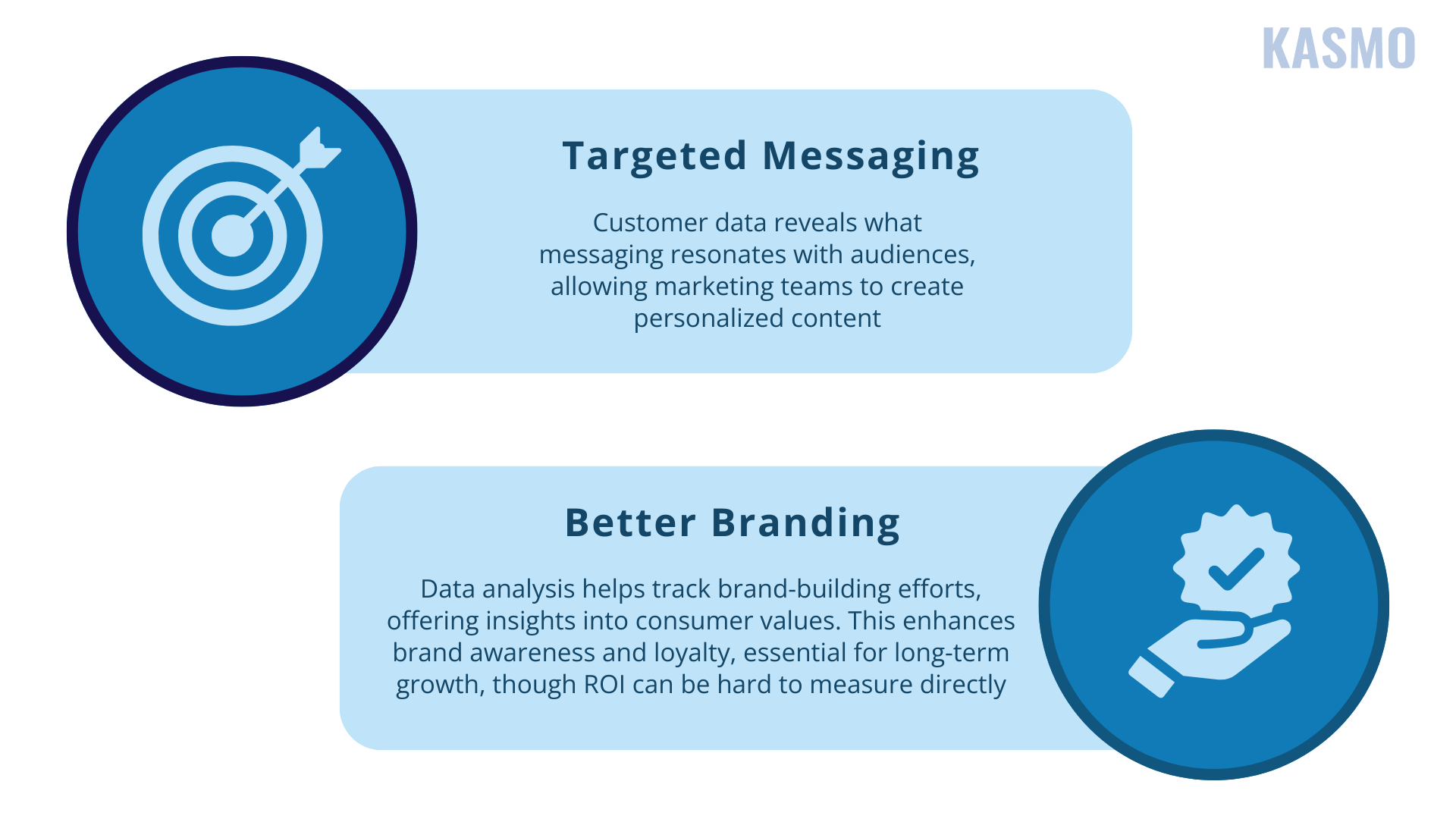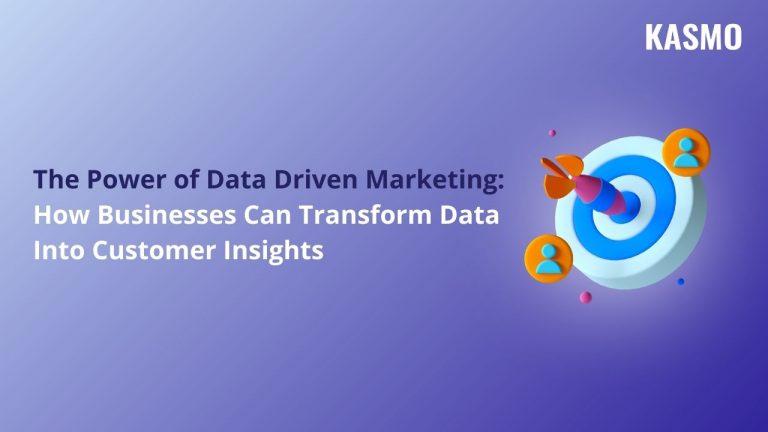Are you wondering how you can create a data driven marketing strategy that will be a strong foundation for your business in this competitive market? To create a strong foundation, you need to have data that is uncorrupted and help you analyze your customers’ demands.
According to a survey by McKinsey, businesses who use customer analytics are 23 times more likely to be favored over their competitors. This customer analytics or data analytics can help build data driven B2B marketing strategies, enhancing the rate of customer acquisition and reducing customer churn.
In this article, we will discuss in detail what a data driven marketing strategy is, its components, and the benefits you can leverage to build customer loyalty. We will also explore how you can overcome common challenges while creating data-driven strategies with Snowflake AI Data Cloud.
Understanding What is a Data Driven Marketing Strategy
Data driven marketing strategy can be defined as the process of gathering customer information to provide personalized product recommendations. Using marketing analytics enables the marketers to plan and focus on devising an optimum way to provide customized experiences.
This strategy is used to ensure that brand communications are in accordance with the customer’s data. This data helps marketing teams to determine the needs, wants and behaviors of customers in the future. Marketers can develop specific techniques, enhancing the Return on Investment (ROI).
One of the major points while creating data driven marketing strategy is analyzing data to understand customer’s behavior and their purchasing process. This helps marketing teams to create successful marketing campaigns.
Data Driven Marketing VS. Traditional Marketing

What are the Key Components of a Data Driven Marketing Strategy?
Data Collection
- Data Sources: Marketers gather data from numerous sources, like website traffic data, social media engagement, customer feedback through surveys, customer service, sales, and data from third parties.
- Data Quality: The data must be accurate, complete and relevant. Poor quality of data leads to making wrong decisions.
Data Integration
- Unified Data Sources: Data integration provides a unified view of the customers by combining data from online and offline sources.
- Data Management Platforms (DMPs): DMPs or Customer Data Platforms allow marketers to unify and engage with customer data in one place, helping in retrieval and analysis.
Data Analysis
- Descriptive Analytics: Acquire records of how they have performed in the past through historical or sales data.
- Predictive Analytics: Analyze historical data and present data by using machine learning models. This will help you predict future trends and demands.
- Prescriptive Analytics: Leverage data analysis and predictive models to enhance your marketing strategies.
Audience Segmentation
- Customer Segmentation: Analyze your list of customers and segregate them into different segments according to their demographic features, behavior and their previous purchases.
- Persona Development: Build customer profiles that can attempt to represent customers’ personalities.
Essential Datasets Every Marketer Should Utilize for Creating Data Driven Marketing Strategy
To effectively define and understand your audience—both potential and existing customers—marketers should focus on several key data sources:
- CRM Systems: Integrate data from your CRM system, to gain insights into client behaviors and trends among your top accounts. This helps in understanding customer interactions and preferences.
- Marketing Automation Platforms: Utilize data from marketing automation tools to trace your customers’ journeys towards purchase or conversion. This step-back view in the sales process reveals critical touchpoints and decision-making paths.
- Paid Media Performance: Analyze performance data from your paid media platforms’ APIs to identify where your customers are coming from and what influences their decisions. This information is crucial for optimizing ad spend and targeting.
- Loyalty and Retention Data: Import usage data, loyalty points, and retention metrics into your data warehouse to track post-sale activities. This helps in identifying your most loyal customers or brand advocates who can promote your products and services.
Challenges Marketers Face While Creating a Data Driven Marketing Strategy

How Snowflake Solves Challenges Faced by Marketing Teams
The Snowflake AI Data Cloud simplifies challenges for marketers and simplifies the process for data-driven marketing strategy and marketing analytics. With Snowflake, marketers obtain numerous benefits including analyzing customer journeys. Marketing teams can now get the opportunity to monitor consumer behavior in all the touch points- before and after the purchase decision.
A clear and wide understanding of consumers’ behavior helps make strategic moves with less depth and expensive analysis. Further, it can also increase internal data by purchasing third-party data in the Snowflake Data Marketplace.
Real-time data means that businesses can get information immediately and make efficient decisions. Real-time data availability enhances your understanding of the current position of the brand in the market. This ensures that you are able to have real-time visibility in your business processes and customers’ services.
Benefits of a Data Driven Marketing
Data is important for every organization’s success. There are numerous benefits that businesses can get from data driven marketing. Let’s discuss these benefits:
Detailed Insight on Customers
Data gathered from customers through several communication channels and third parties help businesses gather insights on customers, their behaviors, purchasing history and products or services they prefer the most. This insight allows marketers to create effective marketing campaigns and advertisements.
Strong Customer Relationships
If businesses can get accurate customer data, it allows them to communicate with customers clearly. This helps in building stronger customer relationships and brand loyalty. Marketing teams can create better and personalized product recommendations, emails offering discounts, and promotional ads. Businesses can meet customer expectations by engaging with prospects in real time.
Quick Feedback Response
If you are running any promotional ads or marketing campaigns on any of your channels, you can get feedback in near-real time with data driven marketing. This allows you to gain insights on the channels by which marketing campaigns are producing the desired result and reaching targeted customers.
Personalization
Data enables the customization of marketing campaigns by combining insights with specific customer information. Here are a few examples where customer personalization can be particularly effective:
- Direct Mail
- Real-time Website Interactions
- Social and Digital Channel Marketing
- In-store Marketing Events
How Marketers Can leverage Data Driven Marketing?

How Businesses can Create an Effective Data Driven Marketing Strategy: A Step-by-Step Guide
Step 1: Setting Objectives
Before collecting data, define what you want to achieve. Clear objectives will guide your next steps, helping you determine what information to collect, where to find it, and what insights to seek.
Step 2: Gathering Data
Identify the information needed to meet your objectives. Consider what data will inform your strategy and where you can access it.
Step 3: Collecting and Organizing Data
Choose a data platform to organize your data. Use this platform to collect data from various sources.
Step 4: Building Capabilities
Depending on your goals, you may need to build a team or acquire in-house/external capabilities to analyze and act on the data.
Step 5: Getting Organizational Buy-In
Implementing a data-driven approach, especially for the first time, may require approval from various stakeholders.
Step 6: Measuring and Tracking Progress
Develop a process to monitor your campaign’s performance. This will help you analyze your actions and report progress to stakeholders.
Final Thoughts
Creating a data driven marketing strategy is crucial for businesses aiming to excel in today’s competitive environment. This approach involves collecting and analyzing customer data to deliver personalized experiences, thereby boosting customer loyalty and enhancing Return on Investment (ROI). By utilizing tools like Snowflake AI Data Cloud, marketers can address common challenges such as data privacy, integration, and quality, enabling real-time insights into consumer behavior across all touchpoints.
The advantages of a data driven marketing strategy are significant, offering detailed customer insights, fostering stronger relationships, and enabling personalized marketing efforts. Marketers can quickly respond to feedback from promotional campaigns and use data to tailor their messaging effectively.


